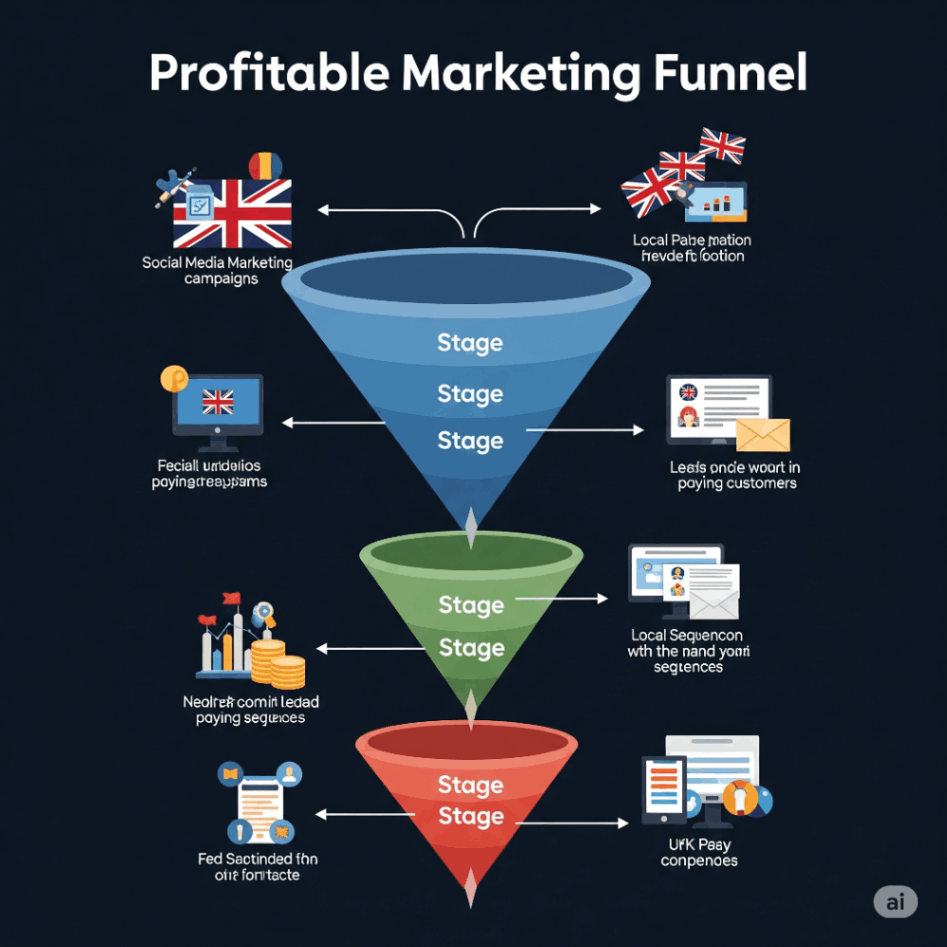Introduction
In 2025, social media algorithms continue to play a central role in shaping the landscape of digital marketing. As platforms such as Facebook, Instagram, TikTok, and LinkedIn continue to evolve, their algorithms are becoming more sophisticated, influencing how businesses reach and engage their audiences. Understanding how these algorithms work is crucial for marketers looking to stay ahead in an increasingly competitive digital space. In this article, we’ll explore how social media algorithms are changing digital marketing, the latest trends, and the strategies businesses need to adopt to thrive in 2025.
The Evolution of Social Media Algorithms
Over the years, social media algorithms have evolved from basic chronological timelines to more advanced systems that focus on personalization, engagement, and content relevance. The rise of AI and machine learning has made these algorithms smarter, allowing them to better predict what content will resonate with users.
Key Developments in Social Media Algorithms:
-
Personalization: Algorithms now prioritize content based on individual preferences, behavior, and interactions, ensuring users see the most relevant posts.
-
AI and Machine Learning: These technologies enable algorithms to continually learn from user behavior, improving the accuracy of content recommendations over time.
-
Engagement Metrics: Metrics such as likes, shares, comments, and time spent on content are increasingly important in determining what gets shown to users.
-
Content Type Prioritization: Algorithms now give more weight to video content, live streaming, and interactive content, reflecting shifts in user behavior and preferences.
How Social Media Algorithms Are Shaping Digital Marketing in 2025
As we enter 2025, social media algorithms are influencing how brands approach digital marketing, forcing businesses to adapt their strategies to optimize visibility and engagement. The way businesses interact with their audience, measure success, and create content is fundamentally changing.
1. Content Personalization
In 2025, social media algorithms are increasingly personalized, allowing businesses to deliver highly relevant content to their target audience. Personalization goes beyond just targeting based on demographics and location; it now takes into account user behavior, preferences, and even the time of day when a user is most active.
-
Dynamic Content Delivery: Algorithms personalize the content feed in real-time based on individual interactions, interests, and behaviors.
-
Behavioral Targeting: Businesses can now segment audiences based on their past interactions with content, allowing for more refined targeting.
-
Predictive Analytics: Predictive algorithms help brands anticipate what type of content will engage users before they even engage with it.
Action Step: Focus on creating content that speaks to the unique needs and behaviors of your target audience. Use social media analytics tools to track performance and adjust your approach based on real-time data.
2. Video and Interactive Content Dominate
Social media algorithms in 2025 favor video and interactive content, reflecting the growing trend of user preference for more engaging formats. Platforms like TikTok, Instagram, and YouTube have already proven that short-form video content garners more engagement than static posts.
-
Short-Form Video: Platforms like TikTok and Instagram Reels prioritize short, engaging video content that captures attention quickly.
-
Live Streaming: Live videos receive higher engagement rates and are promoted more prominently in feeds.
-
Interactive Features: Features such as polls, quizzes, and live chats help increase user engagement, pushing content higher in algorithmic rankings.
Action Step: Invest in video production and interactive content to stay relevant. Consider creating short-form videos and engaging live streams that encourage real-time interaction.
3. The Role of Influencer Marketing
In 2025, social media algorithms continue to amplify the effectiveness of influencer marketing. Algorithms prioritize content that generates authentic interactions, and influencers often can foster this type of engagement with their followers.
-
Increased Authenticity: Micro and nano-influencers are becoming more valuable as algorithms prioritize authentic and meaningful interactions over sheer numbers.
-
Content Collaboration: Collaborating with influencers allows businesses to create content that resonates with niche audiences, often resulting in higher engagement rates.
-
Algorithmic Amplification: Influencers’ content is often shown to users more frequently due to the trust and interactions their content generates.
Action Step: Consider building partnerships with influencers who align with your brand’s values and target audience. Focus on long-term collaborations rather than one-off promotions to build stronger relationships with followers.
4. The Shift Toward Paid Advertising
While organic reach is still important, paid advertising is becoming a more integral part of social media strategies. Social media algorithms now often limit the organic reach of business pages, making it necessary for brands to invest in paid ads to maintain visibility.
-
Targeted Advertising: Paid ads are more targeted than ever, with algorithms allowing businesses to hone in on specific user behaviors, interests, and demographics.
-
Higher ROI: With advanced targeting, businesses can achieve a higher return on investment by reaching the right audience with the right message.
-
Ad Formats: The rise of native ads, stories, and in-feed ads has transformed the way businesses advertise, blending more seamlessly with user-generated content.
Action Step: Allocate a budget for paid social media campaigns and experiment with different ad formats. Continuously test and optimize campaigns based on performance metrics.
5. Social Commerce and E-Commerce Integration
Social media platforms are increasingly becoming shopping destinations. In 2025, social media algorithms are facilitating the growth of social commerce, allowing brands to sell directly on platforms like Instagram, Facebook, and TikTok.
-
Shoppable Posts: Platforms now allow users to purchase products directly from posts, stories, or live streams without leaving the app.
-
Seamless Checkout: The ability to complete purchases without leaving social media apps has made shopping more convenient for users.
-
User Reviews and Ratings: Algorithms favor content with positive reviews and user-generated content, which helps drive purchasing decisions.
Action Step: Leverage social commerce features by setting up a store on relevant platforms. Ensure that your product catalog is well-curated, visually appealing, and easy to navigate.
How to Adapt Your Digital Marketing Strategy for 2025
To thrive in the changing landscape of social media algorithms in 2025, businesses must adapt their digital marketing strategies to align with these new trends.
1. Focus on Content Quality Over Quantity
With algorithms prioritizing relevance and engagement, the quality of your content is more important than ever. Focus on creating content that adds value, encourages interaction, and speaks directly to your audience’s needs.
-
Action Step: Create fewer, higher-quality posts that drive engagement, rather than focusing on posting frequently.
2. Optimize for Mobile Experience
As social media continues to be dominated by mobile users, optimizing your content for mobile is essential. Ensure your videos, images, and ads are mobile-friendly and provide a seamless experience across devices.
-
Action Step: Test all your content on mobile devices before publishing to ensure it looks great and functions well.
3. Track Algorithm Changes and Adapt
Social media algorithms are constantly evolving. To stay ahead, it’s important to stay informed about any updates and changes. Follow industry news, attend webinars, and use social media analytics tools to track algorithm shifts and adjust your strategies accordingly.
-
Action Step: Regularly review your social media performance and make necessary adjustments based on algorithm updates and engagement patterns.
4. Leverage Data for Personalization
Utilize the data provided by social media platforms to understand your audience better and personalize your content and ads. The more tailored your content is to individual users, the more likely it is to succeed.
-
Action Step: Invest in social media analytics tools to gather data on your audience’s behavior and preferences, and use this data to inform your content strategy.
Conclusion
Social media algorithms are transforming the landscape of digital marketing in 2025. From content personalization to the rise of social commerce, businesses must adapt to these changes to remain competitive. By understanding how algorithms work and integrating new strategies into your digital marketing plan, you can enhance your reach, engagement, and ROI in the evolving social media ecosystem.
FAQ
1. How do social media algorithms affect content visibility?
-
Algorithms prioritize content that is relevant to users based on their interests, engagement history, and behavior. This means only content that resonates with users is likely to appear in their feeds.
2. Are influencers still effective in 2025?
-
Yes, influencer marketing remains effective, particularly when working with micro and nano influencers who generate authentic interactions and higher engagement rates.
3. How can I improve my organic reach on social media?
-
While organic reach is becoming more challenging, you can improve it by creating high-quality, engaging content, using hashtags effectively, and encouraging user interactions such as comments and shares.
4. What is social commerce, and how does it work?
-
Social commerce refers to the ability to sell products directly on social media platforms. It allows users to purchase items without leaving the app, enhancing the shopping experience.
5. How can I stay up to date with social media algorithm changes?
-
Follow industry news, attend webinars, and use analytics tools to track changes. Regularly review performance metrics and adapt your strategy based on these insights.
By staying informed and adapting to the changes brought about by social media algorithms, businesses can maximize their digital marketing efforts and achieve greater success in 2025 and beyond.


